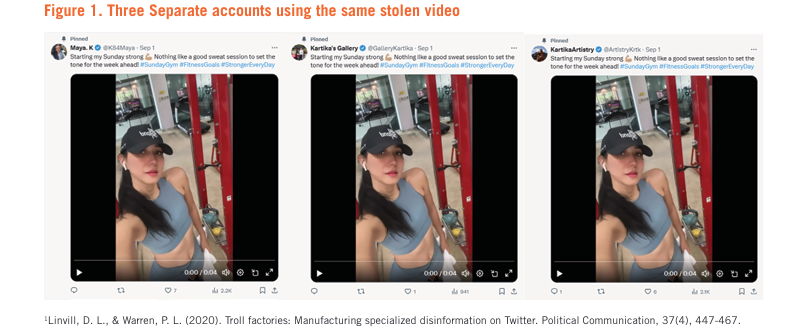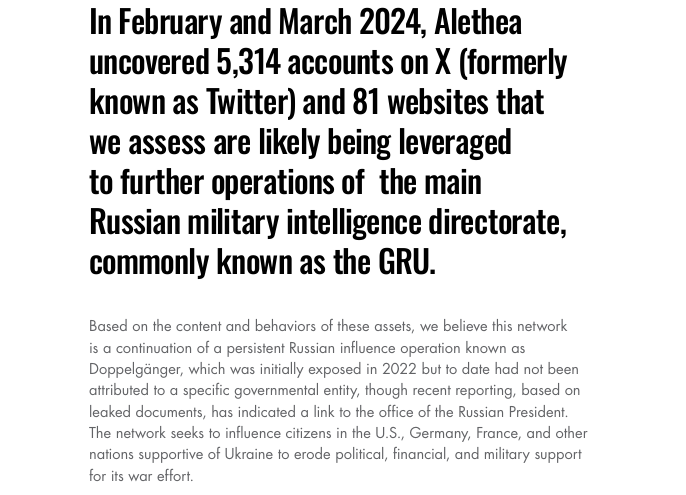10 ways fake political headlines give themselves away — backed by data
Before AI, fake news was already built for deception.
This 2018 study analyzed 276 real vs. fake political news articles.
What it found is still crucial today.
This thread on how fake news actually looks:
Before AI, fake news was already built for deception.
This 2018 study analyzed 276 real vs. fake political news articles.
What it found is still crucial today.
This thread on how fake news actually looks:

The study:
"Comparing Features of Fabricated and Legitimate Political News in Digital Environments"
By Toluwase Asubiaro & Victoria Rubin
University of Western Ontario (2018)
researchgate.net/publication/32…
"Comparing Features of Fabricated and Legitimate Political News in Digital Environments"
By Toluwase Asubiaro & Victoria Rubin
University of Western Ontario (2018)
researchgate.net/publication/32…
The dataset:
🔹 138 fake articles
🔹 138 real articles
🔹 All U.S. political news, 2016–2017
🔹 Fake articles collected from “Pants on Fire”–rated sites (PolitiFact)
🔹 Real articles matched by topic (via Reuters + Google)
What they tested: language, punctuation, tone, structure
🔹 138 fake articles
🔹 138 real articles
🔹 All U.S. political news, 2016–2017
🔹 Fake articles collected from “Pants on Fire”–rated sites (PolitiFact)
🔹 Real articles matched by topic (via Reuters + Google)
What they tested: language, punctuation, tone, structure
1. Fake headlines are longer
They had more words on average than real ones.
Why?
Because packed headlines overwhelm you with claims before you can question them.
They had more words on average than real ones.
Why?
Because packed headlines overwhelm you with claims before you can question them.
2. Fake headlines overuse punctuation
Fake headlines use more exclamation points, dashes, and commas.
Think of them as writing in panic or yelling.
This isn’t accidental.
It’s meant to spike emotional urgency.
Fake headlines use more exclamation points, dashes, and commas.
Think of them as writing in panic or yelling.
This isn’t accidental.
It’s meant to spike emotional urgency.
3. Fake headlines are vaguer
They contain more pronouns (“he,” “she,” “they”) and more demonstratives (“this,” “that”).
Real headlines use names.
Fake ones hide behind fog.
They contain more pronouns (“he,” “she,” “they”) and more demonstratives (“this,” “that”).
Real headlines use names.
Fake ones hide behind fog.
4. Fake headlines are more emotional
Researchers measured emotiveness — the ratio of adjectives/adverbs to nouns/verbs.
Fake headlines try to feel true.
Real ones try to report what’s true.
Researchers measured emotiveness — the ratio of adjectives/adverbs to nouns/verbs.
Fake headlines try to feel true.
Real ones try to report what’s true.
5. Fake stories use more slang and swearing
Articles with swear words, casual tone, and slang = more likely to be fake.
It’s all about familiarity.
Sound like the reader, win their trust.
Articles with swear words, casual tone, and slang = more likely to be fake.
It’s all about familiarity.
Sound like the reader, win their trust.
6. Fake stories are shorter — but denser
Fake articles had fewer paragraphs and fewer total words, but the paragraphs were longer.
Translation: less space, more rant.
Compact rage is harder to skim critically.
Fake articles had fewer paragraphs and fewer total words, but the paragraphs were longer.
Translation: less space, more rant.
Compact rage is harder to skim critically.
7. Fake headlines avoid facts
Researchers tracked named entities — people, places, dates.
Real headlines name them. Fake ones avoid them.
Vagueness = less accountability.
Researchers tracked named entities — people, places, dates.
Real headlines name them. Fake ones avoid them.
Vagueness = less accountability.
8. Fake stories are more emotionally extreme
Articles had more affective words (positive + negative emotion terms).
They pushed harder on feelings — not analysis.
This is classic manipulation design.
Articles had more affective words (positive + negative emotion terms).
They pushed harder on feelings — not analysis.
This is classic manipulation design.
9. Fake headlines try harder to sound dramatic
They combine multiple deception markers:
– Vague pronouns
– Lots of punctuation
– Emotional buzzwords
– Fewer facts
One red flag alone? Maybe noise.
Three or more? It’s not an accident.
They combine multiple deception markers:
– Vague pronouns
– Lots of punctuation
– Emotional buzzwords
– Fewer facts
One red flag alone? Maybe noise.
Three or more? It’s not an accident.
10. These patterns are visible — even without AI
This study came before GPT.
Before QAnon exploded. Before “cheapfakes.”
And the patterns it found? Still with us.
Style is a signal. Panic is a tell.
Emotive overload is not an accident.
This study came before GPT.
Before QAnon exploded. Before “cheapfakes.”
And the patterns it found? Still with us.
Style is a signal. Panic is a tell.
Emotive overload is not an accident.
Full study:
By Toluwase Victor Asubiaro & Victoria L. Rubin (2018)
University of Western Ontario
#disinformation #fakenews #medialiteracy #digitaldeceptionresearchgate.net/publication/32…
By Toluwase Victor Asubiaro & Victoria L. Rubin (2018)
University of Western Ontario
#disinformation #fakenews #medialiteracy #digitaldeceptionresearchgate.net/publication/32…
• • •
Missing some Tweet in this thread? You can try to
force a refresh











